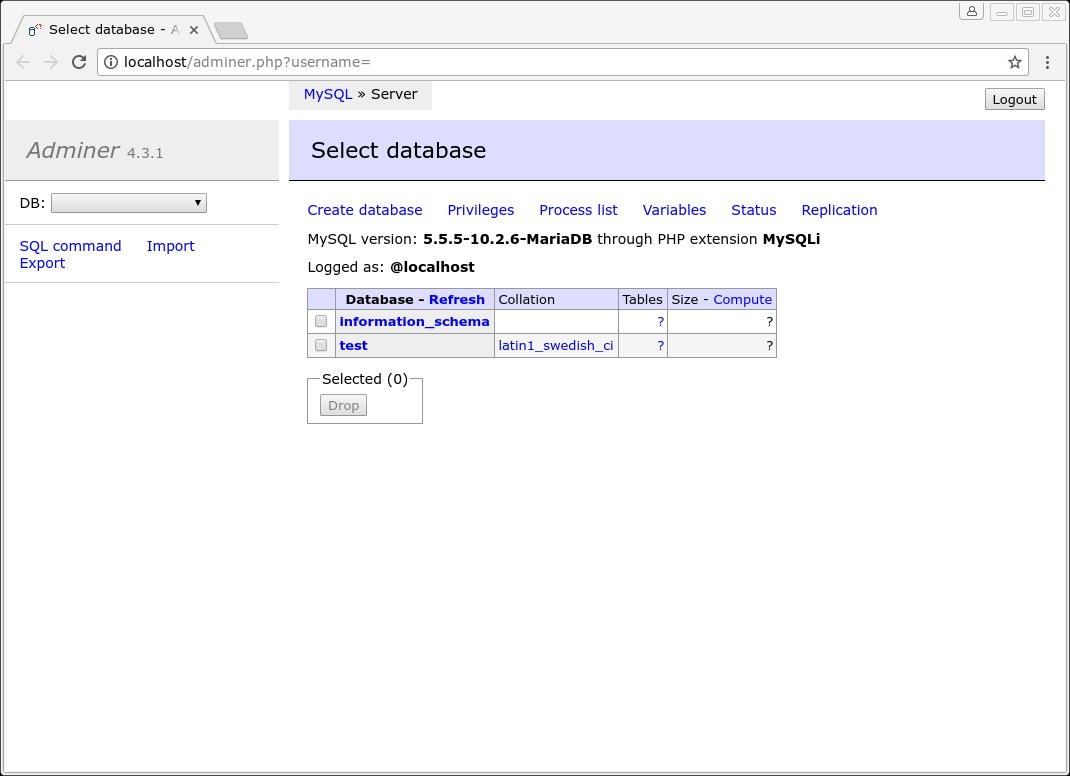
The client does not require a SSL certificate create the client oriented config file that accepts a connection on local port 3307 and talks to the remote stunnel on 3307: /etc/stunnel/nf chroot = /var/run/stunnel4 Assuming MariaDB is up and running, start and enable the stunnel service: systemctl start stunnel Tailor the ACL on your firewall(s) as needed to meet your desired security posture. Last, as appropriate open up an iptables/firewalld/ufw rule that allows the client to connect on port 3307 a very basic iptables rule with no port restrictions would look like: -A INPUT -p tcp -m tcp -s 9.8.7.6 -dport 3307 -j ACCEPT # stunnel 4.56 (CentOS 7) supports both TLSv1 and TSLv1.2 # stunnel 4.53 (Ubuntu 14) only supports TSLv1 not TLSv1.2 Next, create the stunnel server oriented config file in our example we're using MariaDB so we'll choose the ports accordingly to have stunnel accept the connection on the public IP port 3307, then pass the connection to the localhost port 3306: /etc/stunnel/nf chroot = /var/run/stunnel openssl req -new -newkey rsa:2048 -days 3650 \ Ubuntu creates the stunnel4 user and group, and /var/run/stunnel4 directory as part of the package.įirst, create a basic self-signed certificate to use on the server if a real SSL cert is available from a certificate authority it can be used, however a self-signed cert works for the basic point-to-point setup.
#Stunnel with myslq update#
Next, update /etc/default/stunnel4 to enable it at boot: sed -i -e 's/^ENABLED=0/ENABLED=1/' /etc/default/stunnel4

#Stunnel with myslq install#
Lastly, create the systemd unit file to run stunnel as a service: cat /etc/systemd/system/rviceĭescription=SSL tunnel for network daemonsįirst install the base package: apt-get update & apt-get install stunnel # the tmpfiles.d configuration to recreate the directory on reboot:Įcho "d /var/run/stunnel 0770 stunnel stunnel -" > /etc/tmpfiles.d/nf

Useradd -r -m -d /var/run/stunnel -s /bin/false stunnel
#Stunnel with myslq software#
Next, create a user and directories to run the software - on this platform the RPM package does not create the user or directories: # the user and directory for immediate use: RHEL / CentOS 7 as Serverįirst install the base package: yum install stunnel In these examples with CentOS 7 and Ubuntu 14 the package is readily available for both in the base repositories. The stunnel package may be a part of the base distribution or it may be required to use a third party repository such as EPEL or a PPA to obtain. MariaDB traffic will travel over the stunnel proxy, so they should not listen on the public IPs for security best practices. stanza on the slave to match the user created in note 1



 0 kommentar(er)
0 kommentar(er)
